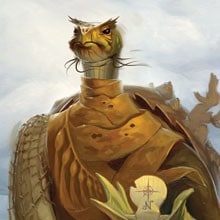“In my long travels across the Tamarran Continent I have heard many versions of our calendar. Allow me to tell the accurate account in the short message below.” — Aktil Na Baylarassa, martle and Traveller
Background
The calendar currently used on the Tamarran Continent is known as the “Time of the Sovereign Pulse,” or “SP” for short. It was established over 2,000 years ago, in SP~2,914, by the Six Guilds Committee of the History of the World (known as the Six Guilds Committee), and has been in continuous use throughout Tamarra since that time. The current year is SP~5,017.
The term “Sovereign” in “Sovereign Pulse” refers to the early years of the current time period, the Third Era of the Fifth Age of the World, when there were a large number of political sovereignties. This was a significant change from first few centuries of this Era, when the folk of the continent lived almost exclusively in families or tribes. The term “Pulse” refers to the fact that the world in Beyonder obeys a rhythm, or pulse, that corresponds to the natural fluctuations (the heartbeat, if you will) of the Six Energies. There is mention of the “pulse” in the Beyonder rhythm system that is used in our game mechanics.
The Calendar
The Sovereign Pulse calendar measures the number of years since the beginning of the Third Era. The naming convention may look complicated, but it’s actually quite simple. First, the letters “SP” designate the Sovereign Pulse. Next is the delimiter “~”. Finally, there is the year itself. So the year of 2,017 is written as SP~2,017, and would be pronounced “S P two thousand seventeen,” or “S P twenty seventeen.”
The Months
The Six Guilds Committee also established a way to measure the days of the year and divide them into months. There are 365.25 days in a year on Ethem, where Beyonder takes place (sound familiar?). The Sovereign Pulse calendar has six months of sixty days each, plus a festival period at the end of the year. Each month is named after one of the founders of the Six Guilds. The months of the year are listed in the table below and correspond roughly to the calendar system we use in our world.
| Order | Month Name | Number of Days | Corresponding Months (roughly) | Guild |
| 1 | Harmon (sa) | 60 | January – February | Charismatics |
| 2 | Tasz (ro) | 60 | March – April | Somans |
| 3 | Sula | 60 | May – June | Mystics |
| 4 | Kalkix (ro) | 60 | July – August | Mentarchs |
| 5 | Kogu (ro) | 60 | September – October | Evokers |
| 6 | Dollano (sa) | 60 | November – December | Umbrists |
Note: The endings (‘sa’ and ‘ro’) are included in parentheses because they are used only very rarely, and only on formal occasions.
The final five (or, every four years, six) days of the year are called the Close of the Tamarran Pulse, or simply “the Close.” For most of the Tamarran Continent, the Close is a time when all work and serious activities give way to celebrations, competitions, and a great deal of eating! As a part of this there is a huge competition among the cities, towns, and regions of the continent to see who can throw the biggest party with the finest display of fireworks and street decorations and performances.
As noted earlier, each year on Ethem is just slightly more than 365 days, which has the result that every four years the Close of the Pulse is six days. The celebrations on these quadrennials include a number of special events that occur at no other time, such as the Great Gate Race, a race around the entire continent via dimensional gates.

